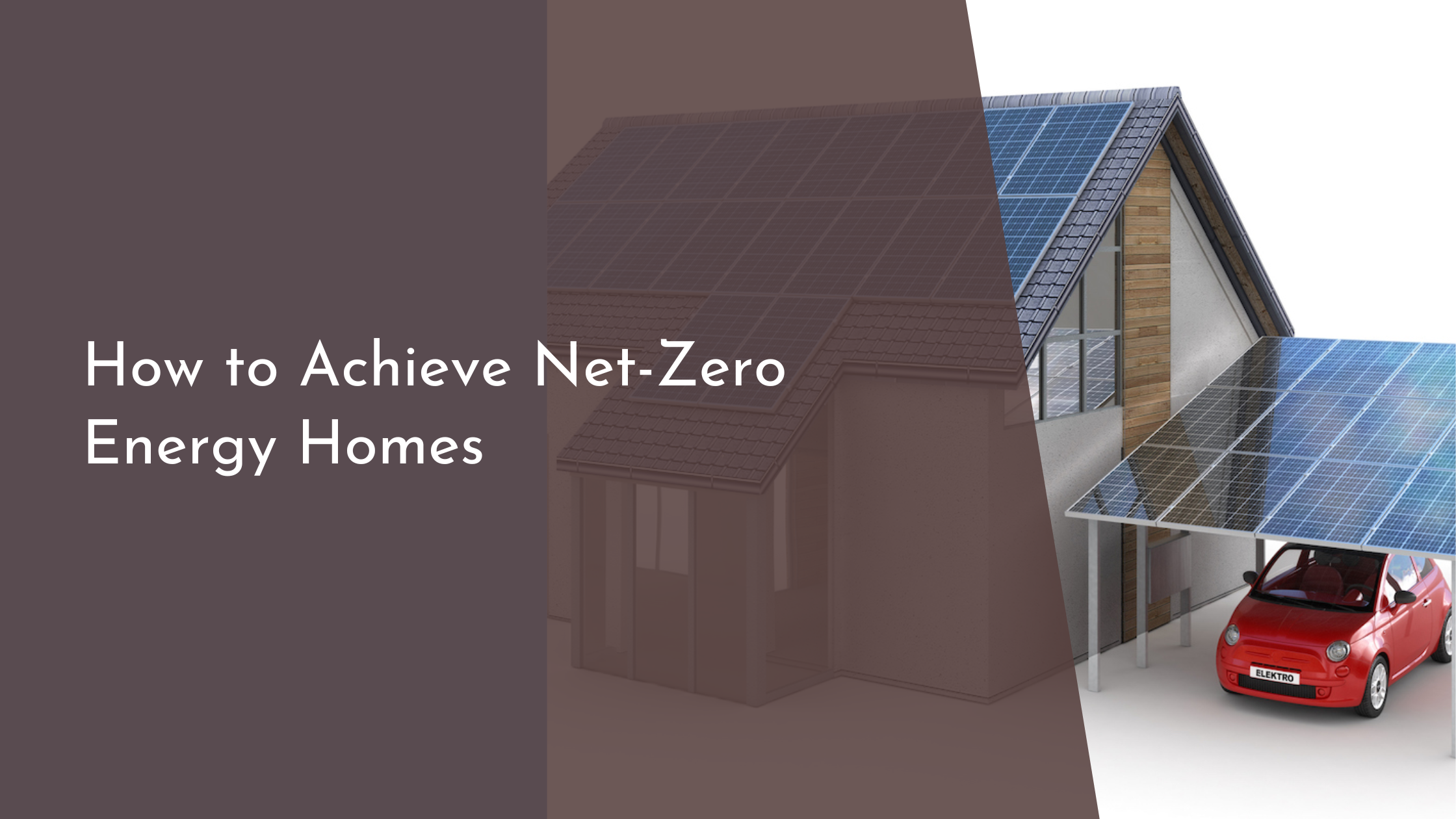How to Achieve Net-Zero Energy Homes
In recent years, the concept of net-zero energy homes has gained significant traction as an innovative solution to reduce carbon footprints and promote sustainable living. These homes are characterized by their ability to produce as much energy as they consume, creating a balanced energy equation that benefits both homeowners and the environment. In this article, we will explore the essential components of achieving a net-zero energy home, from designing an energy-efficient layout to incorporating renewable technologies and optimizing energy usage.
Understanding the Net-Zero Energy Concept
Net-zero energy homes are designed to balance energy consumption with energy production, primarily through on-site renewable energy sources. This concept is rooted in the desire to minimize reliance on fossil fuels and reduce greenhouse gas emissions. By generating as much energy as they use, these homes effectively achieve a “net-zero” balance on the energy meter. The key to understanding this concept lies in recognizing the symbiotic relationship between energy efficiency measures and renewable energy generation, which work together to create a sustainable living environment.
To fully grasp the net-zero concept, it is essential to recognize the importance of both energy conservation and energy production. Energy conservation involves implementing strategies to reduce overall energy demand, such as using efficient appliances and improving insulation. On the other hand, energy production focuses on harnessing renewable energy sources like solar or wind power to meet the remaining energy needs. When both aspects are optimized, a home can operate without drawing excess energy from non-renewable sources, achieving the ultimate goal of net-zero energy.
Designing an Energy-Efficient Home Layout
The foundation of a net-zero energy home begins with a well-thought-out design that emphasizes energy efficiency. One of the first considerations is the orientation of the home. Positioning the house to maximize natural sunlight can significantly reduce the need for artificial lighting and heating. South-facing windows, for example, allow for passive solar heating, which can warm the home during colder months. Additionally, incorporating elements such as wide eaves or overhangs can provide shade during the hotter months, reducing the cooling load.
Another critical aspect of the home layout is the floor plan, which should promote natural airflow and minimize energy waste. Open floor plans can facilitate better air circulation, reducing the need for mechanical ventilation systems. Strategically placing rooms that require less heating or cooling, such as storage areas or garages, on the north side of the building can further enhance energy efficiency. By carefully considering the layout, homeowners can create a living space that naturally regulates temperature and reduces reliance on energy-intensive systems.
Incorporating Renewable Energy Technologies
Harnessing renewable energy is a pivotal step in creating a net-zero energy home. Solar panels are among the most popular technologies, as they can be installed on rooftops to capture sunlight and convert it into electricity. The energy generated can power household appliances and even be stored in batteries for use during nighttime or cloudy days. In some cases, excess energy can be fed back into the grid, creating a potential income stream for homeowners through net metering.
Beyond solar power, other renewable technologies can contribute to a net-zero energy home. Wind turbines can be an effective solution in areas with consistent wind patterns, offering an additional renewable energy source. Ground-source heat pumps, which utilize the earth’s stable underground temperature, can efficiently heat and cool the home with minimal energy input. By diversifying the renewable energy sources used, homeowners can ensure a more consistent and reliable energy supply throughout the year.
Optimizing Energy Usage and Monitoring Efficiency
Achieving a net-zero energy home requires not only the integration of renewable technologies but also the optimization of energy usage. Smart technology plays a crucial role in this endeavor, allowing homeowners to monitor and manage their energy consumption effectively. Smart thermostats, for example, can learn a family’s schedule and adjust heating and cooling accordingly, ensuring comfort while minimizing energy waste. Similarly, energy-efficient lighting systems with motion sensors can reduce electricity use in unoccupied rooms.
Monitoring energy efficiency is equally important in maintaining a net-zero balance. Installing energy monitoring systems can provide real-time data on energy consumption and production, helping homeowners identify patterns and areas for improvement. By regularly reviewing this data, homeowners can make informed decisions about lifestyle changes or upgrades that can enhance energy efficiency. This proactive approach ensures that the home maintains its net-zero status and continues to benefit both the environment and the household budget.
Achieving a net-zero energy home is a rewarding journey that combines thoughtful design, innovative technology, and mindful energy management. By understanding the net-zero energy concept and implementing the strategies outlined above, homeowners can significantly reduce their environmental impact while enjoying substantial energy savings. As more people embrace this sustainable living model, the dream of a cleaner, greener future becomes an attainable reality for all.

